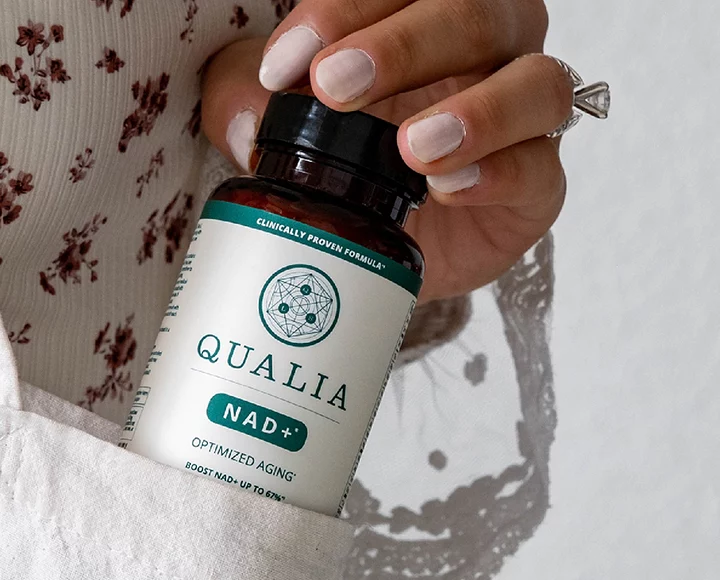California is being hit with record-breaking rains this month, and across the country the weather is wilder than ever. With all of these conditions in play, we asked mold expert Michael Rubino to share his advice on what do before, during and after a storm to ensure that our homes are safe from potential mold-causing conditions from flooded basements and beyond.
Michael is the author of The Mold Medic, an Expert’s Guide on Mold Removal and founder of The Dust Test and HomeCleanse, a revolutionary company with the vision to end the worldwide health epidemic caused by poor air quality and toxic indoor environments.
Bookmark this story and consider sharing with loved ones enduring this year’s rain and snow.
How To Protect Your Home From Mold
During A Rainstorm + Recover From Flooding
Start by taking steps to protect a home proactively…
+ Seal any cracks in the foundation of the home. This will help avoid any water making its way into basements or crawl spaces.
+ Ensure that landscape grading slopes down and away from home in all directions. This helps divert water away from the home so that it doesn’t pool near the foundation.
+ Schedule a professional to come in and assess the water lines regularly. Busted pipes can lead to water collecting in the basements and crawl spaces of homes. Keeping them in tip-top shape will help to avoid this scenario.
+ Install a backwater valve or floor drain plugs. This device will help prevent backed-up sewage and water from entering the home.
+ Elevate low areas or improve the surrounding space by adding layers of topsoil. This helps to redirect water more efficiently so that it doesn’t pool around the foundation.
+ Plant a rain garden. This will help capture high levels of rain and slowly release it into the soil so that it doesn’t pool near the foundation and cause flooding.
+ Ensure that trees and plants are far enough away from the home so that roots will not crack the foundation. 15–20 feet is ideal but look at each specific plant’s growth characteristics.
+ Raise the thresholds of any exterior doors. This will give them a bit more protection against any rising water levels outside of the home.
+ Improve sealing around doors and windows and ensuring that they’re properly installed. This will prevent moisture from creeping inside and help maintain the ideal humidity range of 35-50% to avoid mold growth.
+ Invest in water sensors for the home. This will help alert you to a problem when it happens so that it can be tackled ASAP.
A few things you should tackle right before a storm include…
+ Install and activate sump pumps or french drains. These will help direct any pooled water away from the home so that it doesn’t continue to build up. If possible, get a battery-operated backup pump as well, so that it can still be used in the event of power loss.
+ Clean out the gutters and make sure that they’re ready for the oncoming watery event. This will help properly divert as much water as possible from the home.
+ Opt for flood damage-resistant and moisture-resistant building materials. These materials are designed to sustain little or no damage after 72 hours of water exposure and can be successfully cleaned after a flood to render them free of harmful pollutants. Check out this guideline by FEMA for more information.
+ Create a list of professionals to contact to help handle the situation properly. This can include a qualified remediation team, a qualified mold inspector, professionals who can repair anything in the home, insurance companies, and contractors for major construction damage.
+ Elevate appliances and utilities. This will not only help you save money, but also help your home continue to function properly after a rain/flooding event. The use of utilities can help you dry out your space faster, which is key to avoiding mold.
+ Make sure you have a generator ready and that it’s in working order. With flooding and heavy rains often comes a loss of power, which can interfere with the sump pump’s ability to drain water.
cover yourself with the right Insurance
+Having the correct insurance for water damage and mold is a crucial piece of the puzzle.
A key point to remember is that standard homeowners’ and renters’ insurance typically does not cover flood damage. Oftentimes, you need to purchase additional protection or look to the National Flood Insurance Program for assistance. That way, you’re covered for any unexpected events.
Coverage for mold is also not standard in homeowners’ and renters’ insurance, so this should be another additional layer of protection added to any policy. It may be covered by flood insurance, but double-check to be sure. Also, pay attention to how much coverage is offered. Usually, the amount is around $10,000, which does not always cover the hefty price tag of remediation. That can leave you with a huge bill to decontaminate the space. Weaving in other policies like property damage, flood damage, loss of use, and personal damage can help mitigate what could be an expensive remediation treatment.
Even with all this protection, it’s important to look at what exactly those policies cover, the amount that you’ll receive for damages, and any specific exclusions prohibiting coverage. While this may seem like a lot of work or extra money, having extensive coverage can help you as a policyholder focus on rebuilding instead of fretting about the high cost or potentially cutting corners that will not resolve the toxic indoor environment.
Steps to take after rain + flooding include…
+ Determine where the moisture intrusion is occurring and resolve it ASAP (this may require professionals).
+ Put on protective gear, including clothing, gloves, and a respirator.
+ Pump out any standing water.
+ Use a shop vacuum to remove any remaining water.
+ Toss out any porous items.
+ Mop, clean, and dry the area thoroughly.
+ Turn on the dehumidifier.
+ Contact a qualified mold inspector to come in and assess the home.
+ Get in touch with your insurance company and start filing your claim.
If high levels of contamination are found during the mold inspection, the best option is to call in a qualified remediation company to come in and decontaminate the space as soon as possible. The longer the mold is present in the building, the more particles will be released into the air and surrounding indoor environment. Deep cleaning to remove the contamination released by the microbial growth should also be performed on all surfaces in the building.
Read next: 5 Ways To Prevent Mold In The Kitchen According To The Mold Medic
If you think you may have mold growth indoors, a great starting point to determine if there’s a problem is using The Dust Test. This test is your first stop on your journey to creating a healthy home environment. By analyzing the dust in your home, you can determine if there are high levels of contamination that need to be addressed or have peace of mind knowing that your indoor environment is supporting your wellness.












